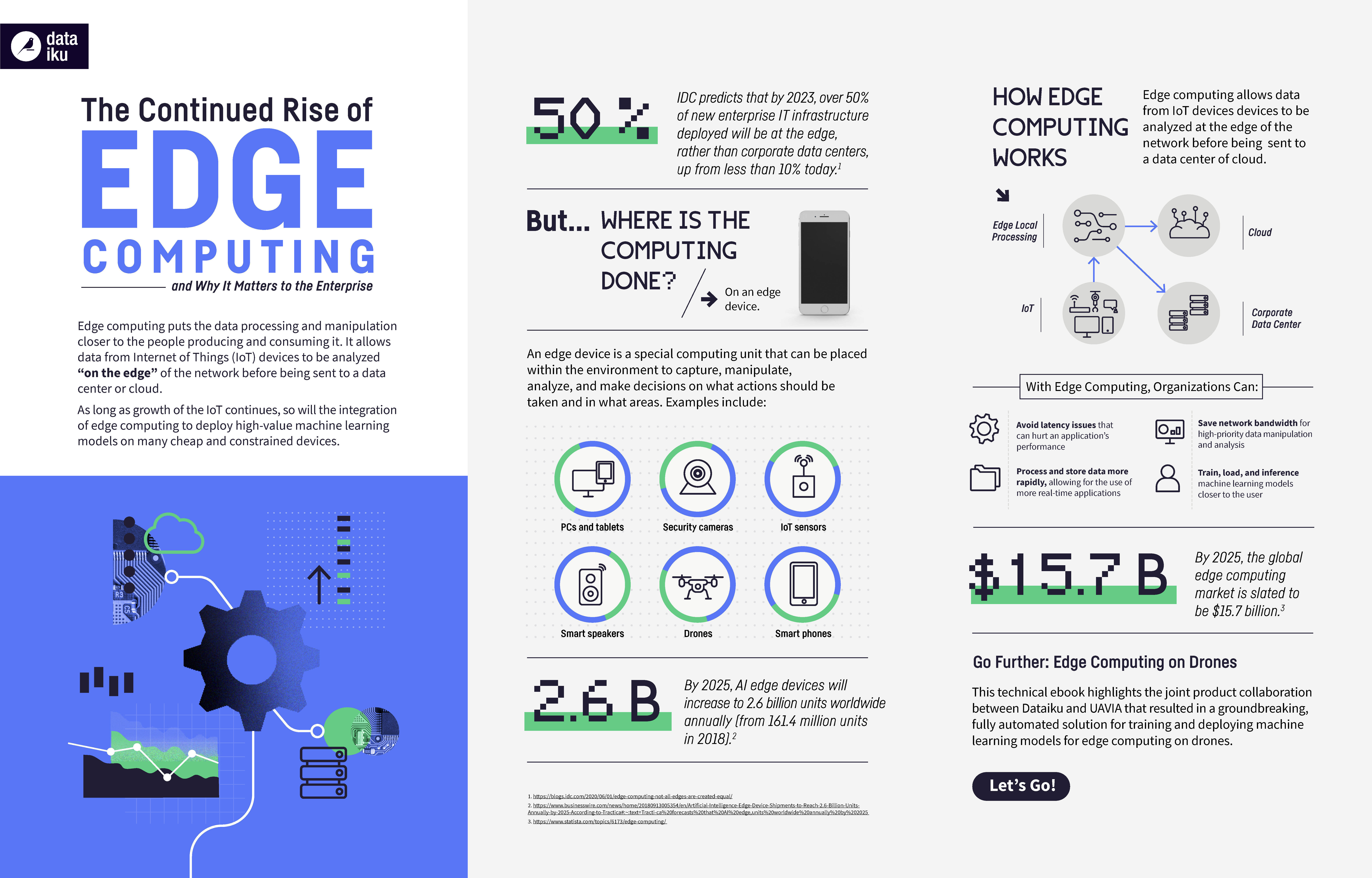"Edge deployments are often pushing the boundaries of what is possible with technology today." Spoken by Matt Hicks, President of Products and Technology at Red Hat, this comment indicates that edge computing as a whole — while likely less understood by the business and underutilized across the enterprise — has the potential to revolutionize use cases across verticals, including but not limited to predictive maintenance, retail and commerce optimization, and industrial/site management.
For data scientists, perhaps the greatest benefit of edge computing is the ability for organizations to process and store data more rapidly, allowing for the use of more real-time applications. With an edge computing model, for example, an algorithm can run locally on an edge server (or on an Internet of Things device like a smartphone). The infographic below has must-know statistics behind the growth of edge computing, how it works in a nutshell, and some of the key benefits for organizations who use it at scale.
Click to enlarge for the full version:





